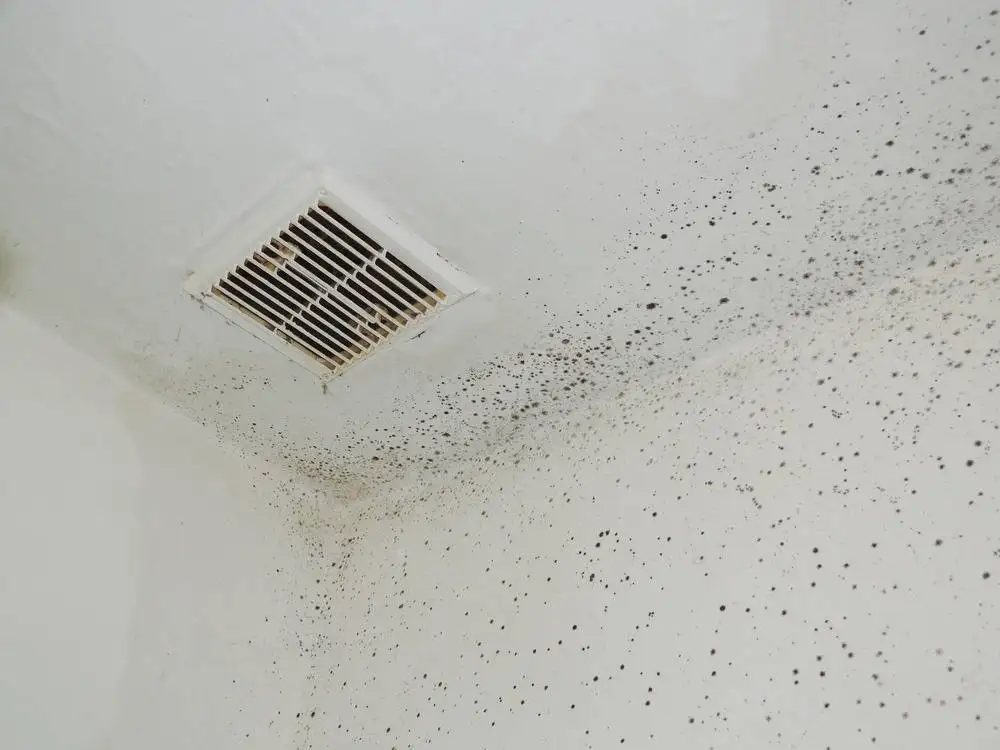
Indoor Mold – Symptoms of Mold Exposure
Mold spores are in the air, at all times, in almost every biome. Mold is a fungus that naturally eats dead plant matter like old logs and thick underbrush. However, mold cannot tell the difference between a damp log and the soaked drywall of a house. If mold grows too dense, thick clouds of mold spores can become harmful to humans nearby.
If any part of your home is flooded or soaked, it can grow mold. Mold can grow invisibly behind drywall, inside seat cushions, and under carpet pads. But as each mold colony grows, the spore concentration can become harmful. Mold exposure can cause various allergic symptoms – all the time and worse at home – and certain types of mold can even cause permanent medical damage.
One of the places mold can grow is inside your home’s ducts, so our team at A-Z Air Ducts has become acutely aware of just how important living mold-free can be for a family’s health. Let’s review the most common types of indoor mold.
Common Types of Indoor Mold
- Acremonium is a white powdery mold that prefers air ducts.
- Alternaria is a fuzzy white mold with black spots. It prefers fabrics and wallpaper; growing near windows and air conditioners creates local moisture.
- Aspergillus is a green, gray, and white mold that often has dark spots. Preferring attics, basements, fabrics, and walls, this sturdy mold can also grow on your dry food stores.
- Aureobasidium is a pink mold with black spots. It prefers wood, caulking drywall, and ground.
- Cladosporium is a green, brown, or black colored mold. It likes warm or cool locations and prefers wood, fabric, carpet, and ducts.
- Penicillium is a blue, green, and yellow mold. It prefers moist carpets, basements, and insulation.
- Stachybotrys is the deadly Black Mold, which is green to black and prefers cellulose found in drywall, fiberboard, wallpaper, and soaked paper.
- Trichoderma is a cream mold that turns green. It prefers wood and is often found on wood window frames near the moisture from bathrooms and kitchens.
Symptoms of Mold Exposure
Mold exposure can affect each person differently. One person may show allergy symptoms; another may develop headaches and light sensitivity. Seek medical attention immediately and mention any signs of household mold if these symptoms appear alone or in related clusters within a household.
- Mild to severe allergic reactions
- Runny nose, sore throat, eye irritation, skin itching, coughing, sneezing, mental fog
- Headaches and tension
- Light sensitivity
- Mental fog and cognitive deterioration
- Rashes, skin irritation, and hives
- Symptoms become worse at night and in the morning
- History of unexplained family illnesses while living in the house
- colds, headaches, mystery allergies, skin problems
- Children or elderly in the house show signs of asthma
- Everyone in the family is sick, but not all in the same way
- Symptoms increase at home
- Symptoms manifest in response to the household routine
- Symptoms persist after medical treatment
- Symptoms persist after deep cleaning
Signs of Black Mold in Air Vents
Black Mold is known as the most deadly common mold that can grow in your home or commercial building. Black mold or Stachybotrys releases mycotoxins in the air, which cause an accumulation of illness symptoms in those who live nearby and has been known to cause deaths.
Black mold can grow anywhere with moisture in your home and often hides in unseen places, like in the damp dust coating the inside of your air vents. Watch out for signs of black mold that may be growing in your ducts.
- A strong smell of sour laundry
- Black spots around the vents and air registers in the home
- Family experiences breathing problems
- Family experiences individual allergy symptoms that may be stronger at home or overnight
- Nausea, dizziness, and mental fog
- Decreased energy and fatigue
How to Prevent Mold in Your Home
If you want to prevent hidden and dangerous mold growth in your home, deny it places to grow. Mold needs porous materials, preferably organic and wood, and it needs moisture. Anything in your home that gets soaked in a flood or plumbing accident is at risk. Anything that is suffused with moisture can often be seen as water damage. The first step is to prevent water damage. The second is to dry your home using fans and heaters as quickly as possible. Extracting moisture quickly will keep mold spores from taking root.
For air ducts and other places that are naturally slightly moist, keep them dust-free.
Mold occurs because dust builds up in the system. Regular cleaning sweeps out all the dust and allergens that build up during the year, while air purification significantly reduces the particles that ever reach your ducts. Many quality air purification systems can prevent mold from flowing through your family’s HVAC system.
Air purifiers can prevent air duct mold by reducing dust buildup and spore exposure at the same time.
Residential HVAC Air Purification Services in Phoenix, AZ
If you suspect there is or could be mold growing in your air duct, don’t wait for the family to develop medical symptoms. If your family is currently showing signs of at-home allergens or cognitive decline, air duct cleaning is an easy way to eliminate risk. A-Z Air Ducts is dedicated to maintaining excellent air quality for Arizona homes and businesses. Contact us today for air duct cleaning services and air purification system selection.
If your family members or you are experiencing acute allergic reactions or other mold exposure symptoms, seek medical attention immediately and mention the risk of household mold.
Image Credit / Shutterstock / Virunja
